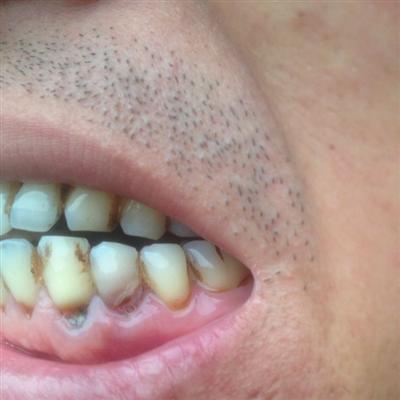Does darling tinea capitis symptom?
summary
Tinea capitis is a common disease in children, and also occurs in adults. Tinea capitis can not only bring physical discomfort to patients, but also cause a series of problems such as hair loss. Timely understanding of this condition is of great significance. Now let's talk about the symptoms of tinea capitis.
Does darling tinea capitis symptom?
Tinea: mainly in children, adults and adolescents can also occur. At the beginning of the red spots, scalp inflamed red, and there are thin flakes of scale, after that, the formation of hair as the center of the dish shaped yellow scab, known as the Yellow scab. The base of the scab adheres tightly around the mouth of the hair follicle, with hair penetrating through the middle. The scab was peeled off, and the red slightly concave erosive surface was under it. The scab of tinea flava gradually expanded and fused to form a large dirty scab, often accompanied by rat odor. In the affected area, the hair is dark and lusterless, but seldom broken. Long term patients, hair follicles atrophy, hair loss, the formation of large permanent alopecia. Normal hair may remain in the center of the scalp, and the hairline area around the scalp is usually not involved. Patients generally have no obvious symptoms or mild itching. Secondary infection may be accompanied by fever and local lymphadenopathy. Some patients only showed seborrheic dermatitis without typical tinea flava scab, which is easy to be misdiagnosed. Tinea flava also occasionally invades the smooth skin and skin outside the scalp.

Tinea Alba: this disease invades children, especially preschool children. In the early stage, the lesions on the head are grayish white scaly patches (Fig. 14-2), round or oval, and then one or several smaller similar lesions may appear nearby. Desquamation spots generally have no inflammatory reaction, but zoophilic bacteria often cause obvious inflammatory reaction, and even become tinea pyogenes. The hair in the affected area is usually broken 2-4mm away from the scalp, with white bacterial sheath around it, which is due to the formation of fungal spores parasitizing outside the hair. Broken hair is easy to pull out. Generally no symptoms, occasionally mild itching. Psoriasis after puberty due to increased sebum secretion of hair, containing unsaturated fatty acids inhibit the pathogenic fungi, can also be self-healing, after healing does not leave scars.

Tinea nigra: rare than the first two, children and adults can be onset. Scalp damage is similar to psoriasis, but the damage is small and large, often accompanied by varying degrees of inflammation. Because the hair root is full of clusters of spores, the hair is often broken when the scalp is exposed, and the residual end is left in the mouth of the hair follicle, which is like black spots, or 1-2mm long broken hair. Some of them can be cured by themselves. The long-term patients often have scars after being cured, causing focal alopecia.

matters needing attention
Tinea capitis not only brings discomfort to patients, but also attacks patients' self-confidence. The above is the specific classification of tinea capitis and its related symptoms. I hope it can attract the attention of patients' friends and parents' friends, find out the disease in time, and protect themselves and their families from the trouble of this disease.















